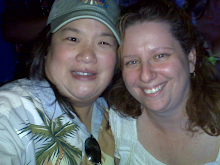
As I was developing my mind map, I can’t help but smile at how much my life has changed. It was interesting to do this project this week. In a few days, I will turn 40 and while being 40 doesn’t bother me, I find myself looking back to see where I’ve been and where I’m going. I’ve had so many different experiences that completely shape who I am, how I act, how I think and even how I teach. My first three academic endeavors (high school, Virginia Tech, and even Central Michigan) were more about a means to an end. “If I just get through this, I can get a job and never have to go to school again.” After I obtained my MS in Sport Administration, I worked as a Rec Director for a small college. What an amazing opportunity it was, and I still carry many lessons from that position (as well as ulcers). Then after bouncing around for awhile, I went back to get an AA in CIS/programming. I was given an opportunity to teach some intro to computer classes and suddenly education wasn’t a means to an end, it was a journey to be enjoyed. And I learned that education occurred as much outside the classroom as it did inside. And now when presented with information, in order to process it, I have to relate it to something I know in order to truly learn. For me, the digital world allows me to dig deeper into “why and how” in order to understand a concept. I search for more information about a topic, and often different perspectives to give me a more balanced view of the topic. I’m someone that has to understand how something works. I was that kid that had to take apart the phone just to see how it worked, luckily my brother could usually put it back together better than I could. Eventually I learned how to put it back right. And now, as I look back on my path.. I know that I am where I’m supposed to be, but it was a winding journey to get here because I had to explore what not to do before I knew what to do.
